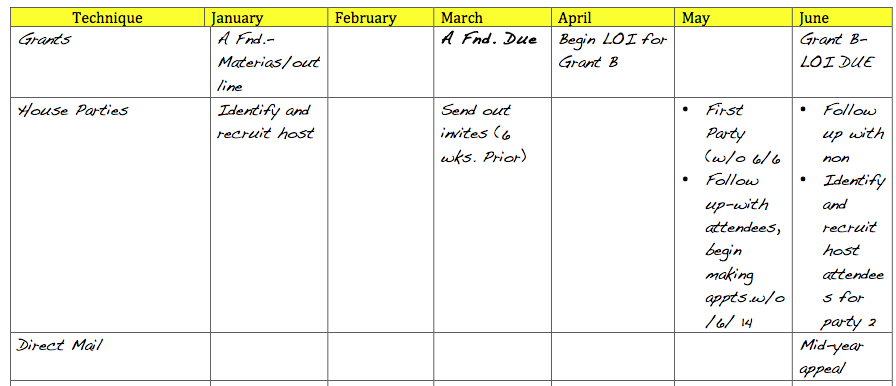About That Fundraising Plan
How many of you would set out on a trip to get to a very important appointment somewhere you’ve never travelled before without first mapping out how you are going to get there? And yet, we do this all the time with fundraising. And to quote my hero, Yogi Berra, “If you don’t know where you are going, you might wind up someplace else.”
Where we want to wind up is in a place where you all have strong, comprehensive and integrated fundraising programs. But you absolutely will not get there if you don’t spend the time planning.
In my mind, planning has three components:
- Identify where you want to go or what you want to accomplish
- Figure out the steps you must take to get there
- Be very clear as to who owns what.
Simple enough and yet most nonprofits don’t seem to get there.
I’m often told that “I don’t have time to plan,” or—even more frequently—“I don’t need to write it down; it’s all in my head.” To which I reply, “Hogwash.”
Taking the time to develop your fundraising plan is time well spent. Writing it down is critical. “In your head” is about as realistic as “in your dreams,” and about as effective.
Your plan doesn’t have to be elaborate. In fact, simple is probably better. Start with a table or spreadsheet. The first column is where you will indicate what type of fundraising you are doing: Annual Giving, Special Events, Major Gifts, Foundation Grants, etc. In the second column, you will focus on the technique. So your annual fund drive may be comprised of direct mail; open houses; house parties; face-to-face solicitations. Your major gifts may also use all but direct mail as techniques to reach out to larger donors.
In each month, indicate what steps you will be taking and who is the owner. For example, for a direct mail appeal that is going out in May, January may be the month the letter and reply device get written. Perhaps the development director is the person doing that, or maybe you’ve hired a writer.
If this seems too complex, no problem. Simplify. Only have one column for what your are doing.

Or mark off the months and in each, indicate what you are doing.
 Whatever works—and whatever you will work is good. To be blunt, working a mediocre plan will get you much further than random moments of brilliance followed by nothing very much.
Whatever works—and whatever you will work is good. To be blunt, working a mediocre plan will get you much further than random moments of brilliance followed by nothing very much.
So stop complaining that you don’t have time. Quit pretending it’s all in your head. Get to work on building a plan. And then work that plan.
Janet Levine works with nonprofits, helping them to increase their fundraising capacity. Hire her to help you increase yours--or to help you be a better, more effective fundraiser. Learn more at http://janetlevineconsulting.com.

